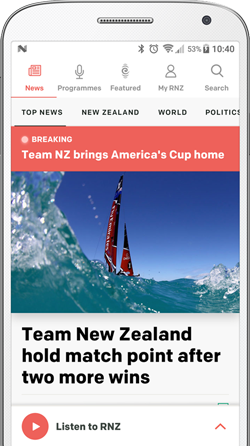
Brown Buttabean Motivation founder Dave Letele. Photo: Stuff / David White
A new study shows Māori and Pasifika community initiatives can use media stereotypes to create their own narrative.
The University of Auckland study, 'Taking the mic: Māori and Pacific voices in the media' examined the success of Brown Buttabean Motivation (BBM), New Zealand's largest community-based fitness and well-being organisation throughout the Covid-19 pandemic.
According to the study's lead author Dr Sandra Smith, senior marketing lecturer at the University of Auckland, over time, and especially during lockdowns, BBM became "much more than just a bootcamp and how to eat healthy".
"It became an extension of whānau and a safe space where support could be provided to members in need. This finding echoes the notion that Māori and Pacific people are likely to seek help from family and community rather than from formal health providers," she said.

University of Auckland senior marketing lecturer Dr Sandra Smith says organisations working to assist Indigenous and diverse communities should take control of their narrative in the news rather than reacting to media coverage. Photo: Supplied / William Chea / University of Auckland
Structural inequities and media framing
Outlined in the report, Māori and Pacific peoples in Aotearoa face entrenched socio-economic and health gaps, including lower life expectancy and higher obesity rates.
"Māori have experienced socio-economic deprivation because of colonisation and racism, manifesting in their significantly reduced life expectancy compared to non-Māori. Similarly, Pacific people also experience socio-economic and health inequities," the study said.
"These health inequities were exacerbated by the Covid-19 pandemic, requiring a consideration of the changing experiences and requirements of diverse communities."
Smith said these disparities can be worsened by mainstream media that frame health as an individual's responsibility, rather than a societal one.
"Media narratives can shape how others view Māori and Pacific people and how Māori and Pacific people view themselves," Smith said, noting past decades of biased coverage.
"So, we were interested in whether the media was actually reflecting the community in an accurate way, in a truthful way, or in a biased way."

Pre-COVID, the study found that news media themes were consistently in line with high attendance at BBM’s bootcamp. However, COVID-19 created different issues for the community and BBM adapted to the new environment and focused on new function programmes in response. Photo: Screenshot / Graph / University of Auckland
BBM's community, Māori and Pacific led innovation
Using the kaupapa Māori framework, Te Whare Tapa Whā and Pacific framework Fonofale, the researchers analysed 102 media articles and interviews (27 before Covid-19, 75 during) via computer-assisted tools and member checks with BBM.
They tracked shifts in top media themes, such as Letele, people, weight, life and boxing, food, health, lockdown, children, and community support.
"Covid-19 created different issues for the community. BBM adapted… New themes such as food, lockdown and children are reflective of this adaptation," Smith said.
"It became more than just a bootcamp, but a community [and] a whānau."
The study found that as gyms shut due to lockdown restrictions, BBM's strong social-media presence which let it livestream workouts, share health information and organise food parcels - became a safe space for whānau.
"That's where they reach out to each other. That's how they perhaps coped when people were being locked down, losing their jobs, not knowing where their next healthy meal was coming from. That was a place where people obviously used those channels to connect."
Smith said from previous research in the health space, specific communities - including Māori and Pacific - will respond better to their own people when it comes to disseminating important information or getting advice.
"They're a lot more trusting of people within their own community. So, I think BBM then became a very important conduit for perhaps some of the health messaging helping people to navigate through some of the confusions around the time of the pandemic."
Despite some lingering stereotypes, media coverage of BBM was "reasonably friendly… and reasonably accurate", the researchers found.
"It's good to see that the media was reasonably friendly towards this community and was reasonably accurate. It wasn't perfect, but that was one of the key findings," Smith said.

Dave Letele in studio with Guyon Espiner. Photo: RNZ / Cole Eastham-Farrelly
Creating your own narrative
Letele's ability to co-create his own media narrative was a stand out finding, Smith said.
"Dave's own celebrity status… he was quite proactive and quite good at co-creating the narrative with the media rather than just having the media telling his story."
Smith hopes this study will inspire other community-based groups to pick up the mic and tell their own stories.
"I saw that Dave was very proactive in actually reaching out to the media, ensuring that the community's story was told accurately... I think communities can take a more proactive stance," she said.
"Not necessarily waiting for mainstream media to create your narrative, but using the media channels that they're using themselves to tell their story."
She said this specific study is a great way of learning about how Māori and Pacific people benefited from having a community like BBM.
"I think we can all take something out of this story."
The paper is published in the Pacific Health dialogue - a journal dedicated to health issues in the Pacific region - and is connected to a larger post-doctoral research project led by co-author, Dr Fa'asisila Savila (Pacific Health) and funded by the Health Research Council.



